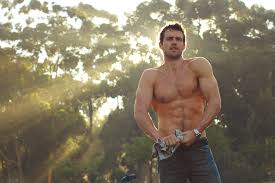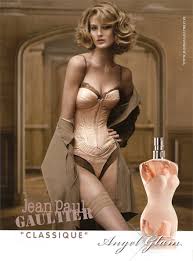Saturday 20 December 2014
Essay Question Analysis
Semiotics is known as "the science of signs" and has evolved to infiltrate all aspects of visual culture. Choose four popular cultural artifacts such as advertisements, posters, fashion campaigns, or designs, and offer an in depth semiotics analysis of their meanings via the use of sign, dialogic, symbol and index. Discuss in terms of symbolism, and/or a fragment standing for the whole.
Key elements of the question :
Semiotics
I need to show I understand this term with research and application
four popular cultural artifacts
I need to have at least FOUR artifacts eg. advertisments, fashion campaigns, designs, posters,
in depth semiotics analysis
500 words at least on each artifact, I will need to go into specific detailing
use of sign
how and why have they been used?
dialogic
(dialogue) words/slogans/song lyrics and how they affect the consumer
symbol
how/what is used? why?
index
what helps connote the message
discuss
a written debate in which i talk about two different sides and form a conclusion on the sides
terms of symbolism
what is representing the ideals and abstract entities (ie love, time, racism)
Possible Pop Culture Artefacts
Definition of artifact
4. a substance or structure not naturally present in the matter being observed but formed by artificial means, as during preparation of a microscope slide. Here
Definition of artefact
n.
1821, artefact, "anything made by human art," from Italian artefatto, from Latin arte "by skill" (ablative of ars "art;" see art (n.)) + factum "thing made," from facere "to make, do" (see factitious ). The spelling with -i- is by 1884, by influence of the Latin stem. Archaeological application dates from 1890. Here
Possible subjects:
(images courtesy of google images)
Friday 12 December 2014
On Photography (book)
In Plato's Cave
"photographs are perhaps the most mysterious of all the objects that make up, and thicken, the environment we recognize as modern"
page three
"photographed images do not seem to be statements about the world so much pieces of it, miniatures of reality that anyone can make or acquire."
page four
Chris Marker
film : Si j'avais quatre dromadaires (1966)
"images which idealize (like most fashion and animal photography) are no less agressive than work which makes a virtue of plainness (like class picture, still lifes of the bleaker sort, and mug shots)
Dziga Vertov
film : Man with a movie camera (1929)
Hitchcock
film : rear window (1954)
Michael Powell
film : peeping tom (1960)
not research
"photographs cannot create a moral position, but they can reinforce one - and can help build a nascent one. "
page 17
nascent - a new organization with future potential
" Any photograph has multiple meanings; indeed, to see something in the form of a photograph is to encounter a potential object of fascination. The ultimate wisdom of the photographic image is to say: "There is the surface. Now think - or feel, intuit - what is beyond it, what the reality must be like if it looks this way." Photographs, which cannot themselves explain anything, are inexhaustible invitations to deduction, speculation and fantasy "
page 23
" strictly speaking one never understands anything from a photograph. Of course, photographs fill in blanks in our mental pictures of the present and the past"
page 23
America, Seen Through Photographs, Darkly
" In the normal rhetoric of the photographic portrait, facing the camera signifies solemnity, frankness, the disclosure of the subjects essence. That is why frontality seems right for ceremonial pictures (like weddings, graduations) but less apt for photographs used on billboards to advertise political candidates (For politicians the three-quarter gaze is more common: a gaze that soars rather than confronts, suggesting instead of the relation to viewer, to the present, the more ennobling abstract relation to the future.) "
page 37 / 38
The Heroism of Vision
" People want the idealized image: a photograph of themselves looking their best. "
page 85
"The news that the camera could lie made getting photographed much more popular "
page 86
" the daguerrotype portrait that "while we give it credit only for depicting the merest surface, it actually brings out the secret character with a truth that no painter would ever venture upon, even could he detect it."
page 87
" Thus, while fashion photography is based on the fact that something can be more beautiful in a photograph than in real life; it is not surprising that some photographers who serve fashion as also drawn to the non-photogenic. "
page 104
"The traditional function of the portrait painting, to embellish or idealize the subject, remains the aim of everyday and of commercial photography, but it is has a much more limited career in photography considered as an art "
page 105
"photography has served to enlarge vastly our notion of what is aesthetically pleasing"
page 105
Photographic Evangels
"photographic realism can be - is more and more - defined not as what is "really" there but as what I "really" perceive. "
page 120
Friday 5 December 2014
Elements of Semiology (internet source)
https://www.marxists.org/reference/subject/philosophy/works/fr/barthes.htm
date first visited : 5th of Dec at 23:29
author of the extract : Roland Barthes in 1964
date first visited : 5th of Dec at 23:29
author of the extract : Roland Barthes in 1964
Introducing Semiotics (book)
"natural signs" (freely occurring throughout nature)
"conventional" signs (those designed precisely for the purpose of communication)
page 5
teachings of St. Augustine (354-440)
William of Ockham (c. 1285 - 1349)
John Locke (1632-1704) Essay Concerning Human Understanding (1690)
page 6 / 7
Ferdinand de Saussure (1857-1913)
published a paper : "Primitive System of Vowels in Indo-European Languages"
his students started the course "Cours de linguistique generale."
diachronic - linguistics which looks at the changes which take place over time in specific languages
synchronic "the state of language in general, an understanding of the conditions for existence of any language"
page 9
"Saussure defined the linguistic sign as a two-sided entity, a dyad. One side of the sign was what he called the signifier. A signifier is the thoroughly material aspect of a sign"
"Saussure described the verbal signifier as a sound image"
page 10
"inseparable from the signifier in any sign - and, indeed, engendered by the signifier - is what Saussure calls the signified"
page 11
(my notes : the signifier is the material used with the codes in it and the signified is the person receiving the codes who has the mental reaction)
Charles Sanders Peirce (1839-1914)
paper "On a New List of Categories" 1867
"a triadic theory of the sign"
insert pic from phone (page 21)
"firstness, secondness and thirdness"
page 27
Roland Barthes
1915-80 he wrote essays in a French mag.
Les Lettres nouvelles
" set out to expose a "mythology of the month" , largely by showing how the denotations in signs of popular culture betray the connotation which are themselves "myths" generated by the larger sign system that makes up society. "
published book called Mythologies in 1957
published essay The Rhetoric of the image in 1964
A linguistic message - all the words
a "coded iconic"message - the connotations in the photograph
a non-coded iconic" message - the denotations in the photograph
page 47
Charles Morris
"Foundation of the Theory of Signs" 1938
Thursday 4 December 2014
Semiotics The Basics (book)
Semiotics : the basics
2nd edition
Daniel Chandler
Routledge Taylor and Francis Group London and New York
first published in 2007
2nd edition published on 2007
Monday 24 November 2014
Otherness and the Gaze
'sex' is the physical anatomy of the person
'gender' is socially defined by what society expects to see
'essential-ism' is the standards that are expected
'The gaze' is what / how we look at things in mainstream society
'Otherness' is what is outside of mainstream and the minority group
Nan Goldin
she questions gender and sexuality
she believes cross gender is a 3rd gender
The Gaze
this is a cutlurally loaded look
we look at everything with preconceptions
the person who is looking has all the power
Male Gaze
this is about men's attitude to women and how women get represented.
there are preconceptions that are in place, typically women get represented as a 'damsel in distress' style character whereas the man is dominant in his role and he has the power. Women become objectified in their roles and are usually there for the men's visual pleasure
Stereotypes
- The War Hero
This is the stereotypical genre of the guy rescuing the woman
- The Cowboy
A pioneer of the western front this shows a glamorous version of events as history was very different to what is being shown
- WW2
This brought upon the new feeling that women are not damsels and that they can do what the men do, this was brought on by the women going into the workplace while the men were away
- The HomeMaker
This stereotype was forced to the forefront of society as after the war the men wanted their jobs back but the women did not want to leave, this stereotype showed women all the positive aspects of becoming a stay at home mum again
Laura Mulvey
A theorist who examines the gender in society, she says that women are being used as 'decorative' objects and that this is shown through the likes of the 'Miss World' competitions where the women shows off their physical attributes and represent themselves as perfect women.
Ideology
Marxist Terms - Karl Marx
what you know isnt real - you are told to know it
false consiousness
Das Kapital (1848)
commodity fetishism
cigarette ad / perfume ad
what is it selling? = the lifestyle, not just the product
Ads create mythical worlds
celebration, in florida
Victor Burgin
anti campaign
hollowness of mass media
John Berger
ways of seeing
ads and documentary are becoming tangled = hard to now tell difference
Paul Wombell
Han Haacke
Adbuster
these all use established channels to deliver new messages / they take existing adverts and change to images and text to create new meanings and show messages that people are going to understand because they understand the original context
Everthing is a product of its time
cultural factors, inside jokes = only make sense because people understand the history and the background info hidden within the images
Mini Task :
What happened in the 70's ?
This is a list me and the group I was with came up with:
Disco
Punk
Womens Lib
Cold war was ongoing
Vietnam War
Fashion = flares / afros / perms
Rocky Horror Picture show
Willy Wonka
Chainsaw massacre - the first one
Star wars - highest grossing film of decade
Grease - was made
Margaret Thatcher - first woman prime minister
Twin towers- tallest buildings
Stephen Hawking - discovered black holes
Protesting - image of the girl who puts the flower in the gun
Jimi Hendrix died
Floppy disc invented
Walkman invented
People were taking drugs
Revolutions
This was the decade of the lower classes pushing back against the government, political unrest and anger.
Monday 17 November 2014
Image as Self
portrait : constructs/reinforces identity
Alec Soth
"Sleeping by the Mississippi" is a series which focuses on the people that visit the Mississippi banks.
painting : portrait / still life
objects have meaning : represent things about the people (for example that they are wealthy, literate)
animorphous : skull
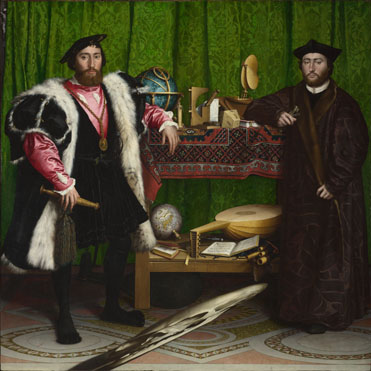
Jan van Eycke
The Arnolfini Portrait is full hidden meanings: such as the oranges that connote fertility, the dog and the dark leather shoes representing wealth.This painting shows exactly how symbolism can be used and in the different ways.

Tina Barney
candid / tabloid
shows identity and surrounding location within her photography, the background helps reveal more about the person

Edward Sheriff Curtis
studied people / society, especially the Native Americans.

August Sander
social structure in Germany
objective - no info given on the person, we as viewers must make our own conclusions

Diane Arbus
appearance of people
she was not very technical but focused her efforts on the visual aspects
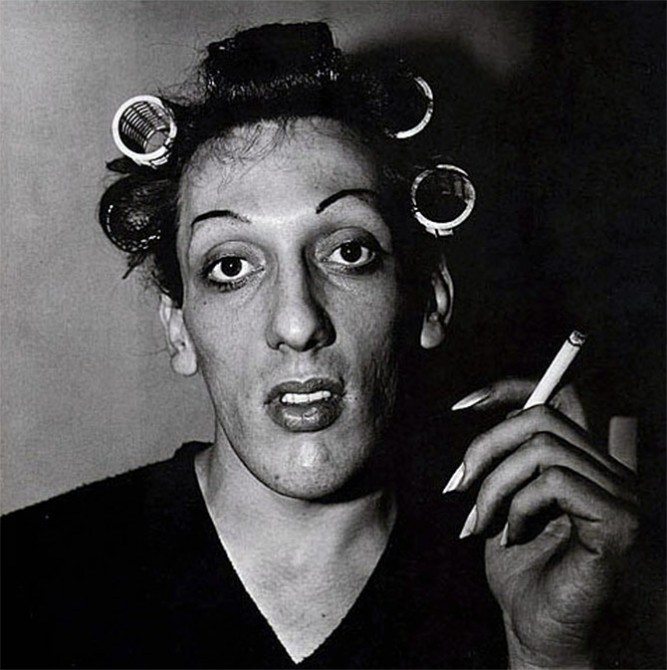
Nicholas Nixon
This photograph shows a close up of the photographers face, he has offered us a detailed look at his face through the use of his photography, it shows all the detail in his eye and he is not trying to omit details but rather highlight them.

Thomas Ruff
objective / scientific / "face as a mask"
shallow DOF, drawing the viewer in as these images were exhibited large scale

Andres Serrano
his reaction to the KKK
styled - atmospheric
invoke a reaction in viewers

Cindy Sherman
how women were represented : Gaze
she challenges the Male Gaze by placing herself into these positions and making a comment about the portrayal of women.
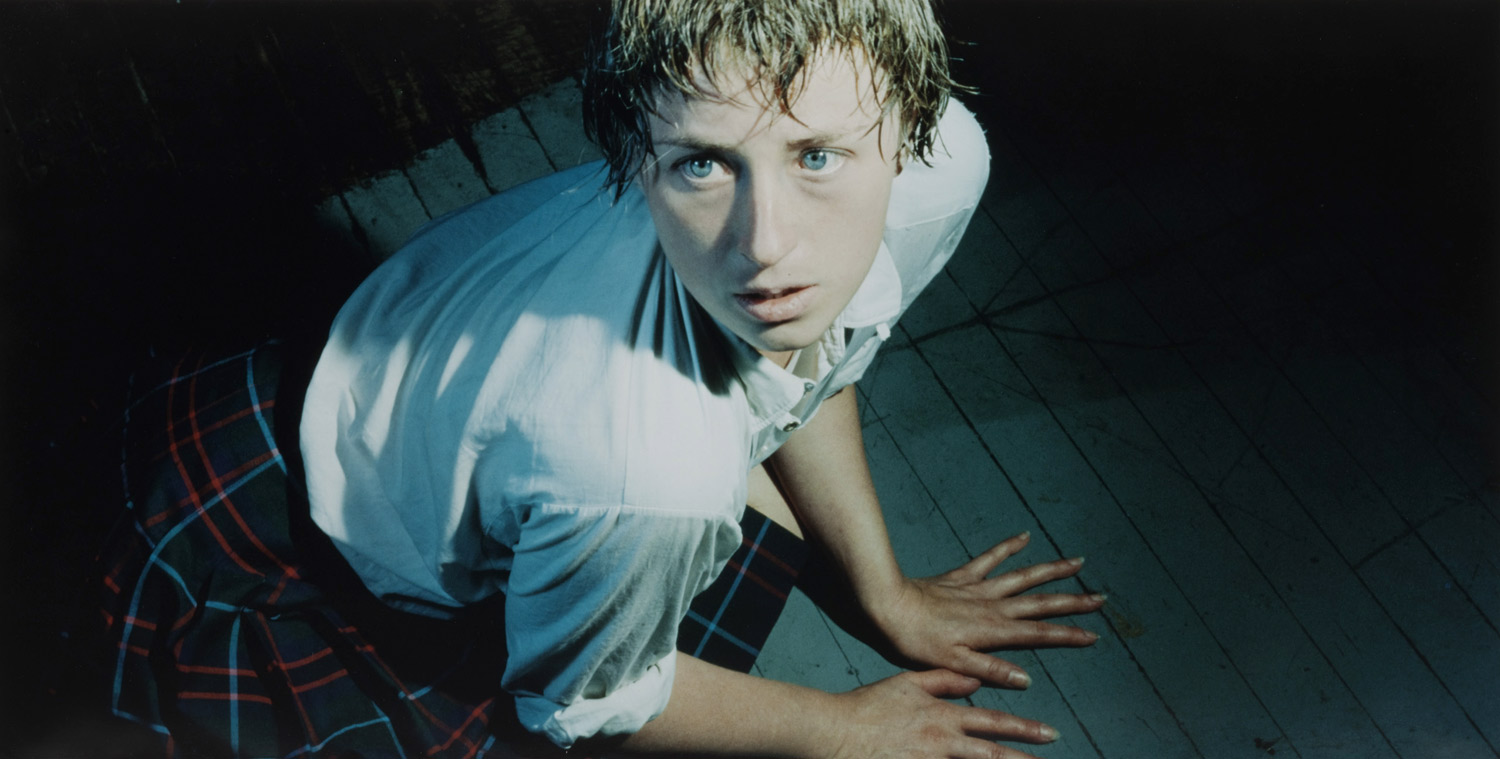
Steve Pyke
photographs groups of people but takes singular portraits, he has a series that focuses on Veterans

Djkestras
video portraits
15-22years old
the people are drunk or high
Also she did a series about teenagers going to the beach, showed them all in similar poses and locations, highlighting that people are all the same even though we do not realise it.

Monday 10 November 2014
Photographic Message
what does the image denote / conote ?
Roland Barthes - photographic message - VLE and printout in book
The Rhetoric of the Image
(the meaning behind it )
camera angles
backgrounds
iconography (ie flags)
emmission - the image is being made
transmission - the image is being seen
reception - where the image is seen
trick effects photoshop, creates a new meaning/image
poses/objects contrasts, angles
syntax layout, text+photos
photogenia shows what cant be written
However the two men both want to be seen as working together their alone-ness is highlighted by the way they have been shown on different sides of the frame. The words chosen can be analysed themselves; they are going to go to war in order to stop death and destruction which is a juxtaposition of its self.
The low camera angle elevates the two men and makes the audience look up to them, furthermore the facial expressions have been chosen specifically to connote different messages; one of agression and commanding power, another slightly more neutral expression which shows calm reserve.
Decoding the Image
Is documentary a fact ?
I think that documentary photography is not a fact, it is just one persons viewpoint.
*Photography: a Critical Nature*
by Liz Wells
truthful record?
does the camera lie?
people believe that photographs are authentic because they do not understand the trick effects that are possible with the camera, they see it as a machine that can not be tampered with
Stephanie Sinclair
Too Young to Wed
images by themselves dont give a background story or context:
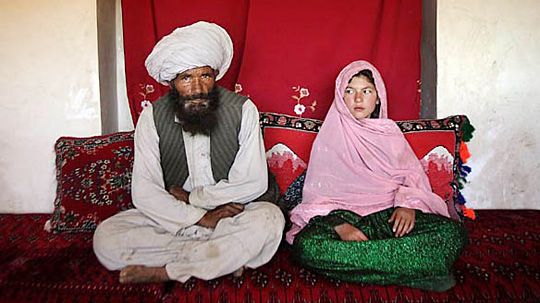
Without the context of this story the photograph denotes a young girl and a man sitting next to each other, if more information were offered the viewer would know that this young girl is being forced into marriage and it is her wedding day. The photograph is not lying but it is omitting certain details that would be helpful to understanding the photograph.
Roland Barthes
photographic message
press photography and its meaning
denoted + connoted message
connoted is heavily coded
how is it connoted ?
many things can give off connotations: layout, camera angle, facial expressions, stance, colours used...
Kevin Lamarque Reuters
Guardian image
- layout of flags - sarcasm/irony "working together" and the flags are mixed together
-facial expressions - aggressive/passive
'points of view' - have to understand different points of view not just your own
colours - represent all the flags
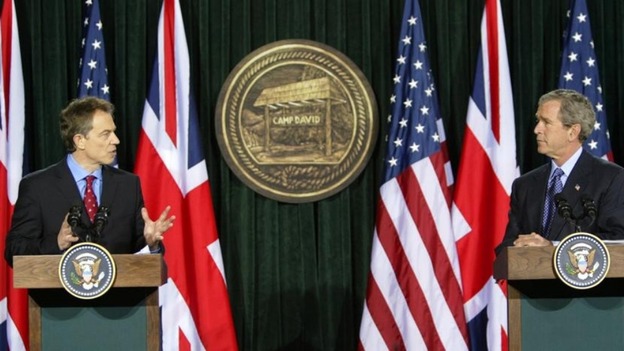
What creates meaning?
emission - what is put out
transmission- how it is put out
reception - how it is taken in
All these things affect how the viewer is going to react to what is being shown
Paul Graham
north ireland
small incidents of war + their impact
new way of communicating warfare
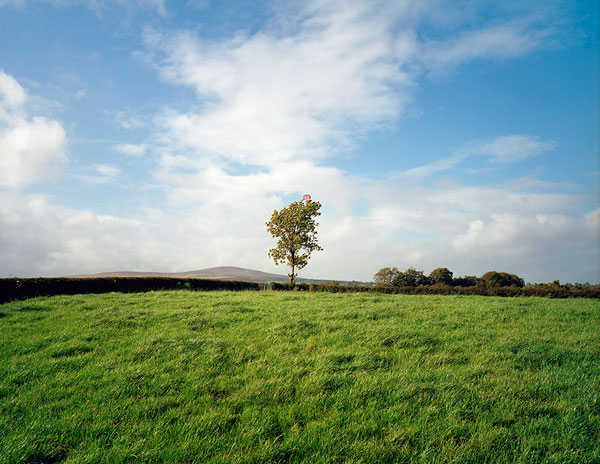
An-My Le
vietmanese - effects / causes of the image
kite festival - understand the conflict to understand the image, the kites are the symbols of the war

Simon Norfolk
execution grounds
beautiful image - with a dark undertone
Susan Meiselas
old images into the landscape
reengage community
^^^^^war photographers - looking for the bigger picture
Monday 3 November 2014
Tourism, Landscape and Myth
Myths
creation of stereotypes by :
postcards / tourist brochures / landmarks
They show the glamorized version of the destination to attract tourists
Martin Parr
debunks myths
shows tourists responses to places
Small World (project) - tourists resorts
wider vision - society / culture / stereotypes
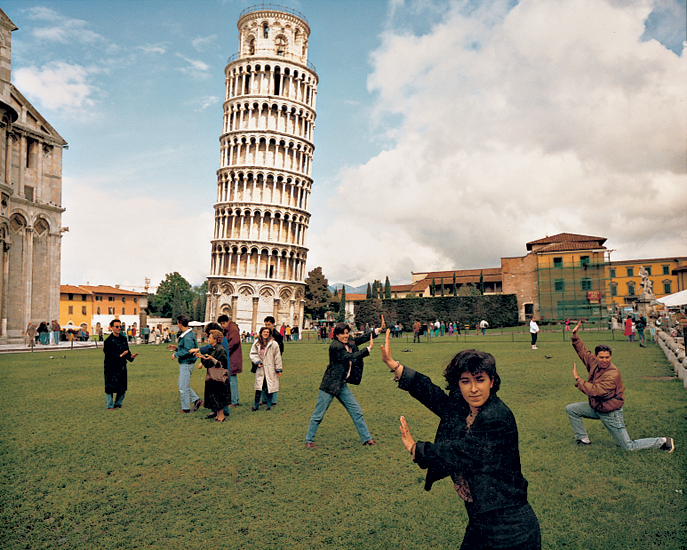 |
| From the series Small World |
In this image Martin Parr is showing how the tourists all react in the same way, he is making a humorous comment about them.
Stereotypes
places: picturesque = inspiring to make you go there
aesthetic / nostalgia
advertising = tiny fragment of a whole
unchallenging
activities / sites of culture
Photographers used to send work back home
natural but different / exotic
painters were hired to show clients in exotic locations
people / natives add a charm element
ideological
"the grand tour"
particular view = an ideal view = not true
not showing realities of life = romantic images
happy peasants however farm life was difficult
Josie Bland
showing yourself in the location - there is a need to prove you have been
Egypt - real / run down / everyday life
Tourists Gaze
inf by magazines
Tourists visit places with preconceptions in their mind, they expect certain things, such as the world to be glamorous and exotic, they do not realise it is some peoples home and it is not exotic to them.
Thomas Gainsborough
painted aristocrats to show off the clients wealth and land

P H Emerson
pictures of east anglian life
documents similar to painters style

Frank Meadow Sutcliffe
Whitby - he photographs the local area because he did not have transport
He finds beauty in the everyday, local area he lives and works in

John Constable
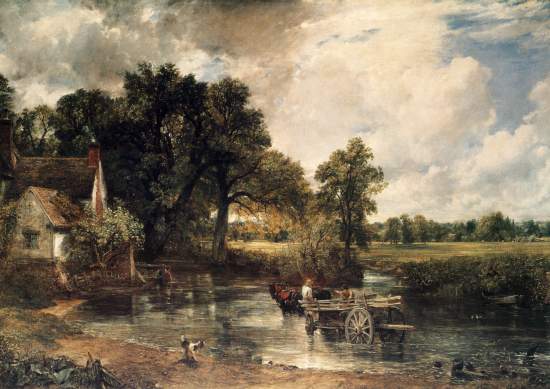
Peter Kennard
reinterprets John Constable
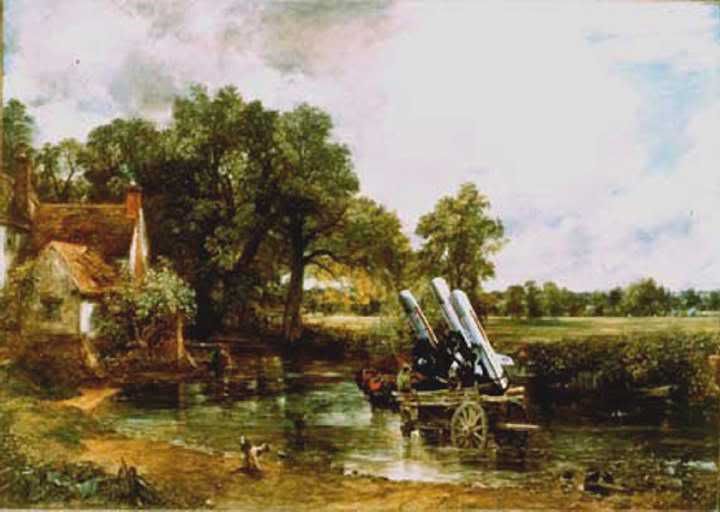
Grief Tourism
ground zero / auschwitz - why do people go?
Anselm Kiefer - interprets land - makes a point
Christian Boltanski - holocaust - photogravure
Victor Burgin - playing on war myths / aware of society
Ron O'Donnell
- makes sculptures on statements
waterfall
consumerism
Karen Know
museums - who is it designed for?
why do we go?
Martin Parr
iconography / myths of british culture
shows the reality

Myths are created by the tourism industry in order to draw attention to that particular desination and attract tourists, this will bring profits into the destination.
Nature of Photographs
*Nature of Photographs by Stephen Shaw*
Colour changes the atmosphere in the photograph because the eyes are lead differently around the image because the colour catches our eye not the subject, colours can be used to manipulate because different colours have different meanings and people associate them with pre ingrained connotations. The tonality of the colours (or saturation level) can also affect the mood that the photograph emits as a dull (desaturated) image gives off a more negative connotation than a brightly over-saturated one will.
Black and White photographs do not mean that the image is more real, however the connotation of B+W are that the photograph is more artistic and that it is 'real' because of the first images that were able to be made were B+W because of technical limitations.
Context will also affect the way that photographs are read, images seen in newspapers are often dismissed yet if the same photograph appeared on a wall in a gallery there would be a different reception received. Depending on the subject the location of the photograph can be equally important as the photograph.
When people view an image they do not think of what has been omitted; these omissions are just as important, as if they had been included would the entire meaning of the photograph change? Would the atmosphere be different? Have these elements been omitted just so that the photographer can reinforce their own point instead of showing the whole picture/story?
There are two different types of framing: passive and active. A photograph with a passive framing means that the main focus is in the centre of the image and there is negative space or just small background elements against the edge of the framing. An active frame is a photograph that leads the viewers eye outside of the photograph, this could by placing the model on the edge of the photograph.
Robert Adams
His works show how that man is affecting the shape and lay of the land.

Thomas Joshua Cooper
emerging / submerging / emerging
The work that he does are beautiful commentaries on the nature that surrounds us

William Eggleston

Stephen Shore

John Davies
he influenced :
The Bechers
"conceptual artists"
taught at Düsseldorf school
these people were taught at the school :
Andreas Gursky
Axel Hutte
Thomas Struth
Colour changes the atmosphere in the photograph because the eyes are lead differently around the image because the colour catches our eye not the subject, colours can be used to manipulate because different colours have different meanings and people associate them with pre ingrained connotations. The tonality of the colours (or saturation level) can also affect the mood that the photograph emits as a dull (desaturated) image gives off a more negative connotation than a brightly over-saturated one will.
Black and White photographs do not mean that the image is more real, however the connotation of B+W are that the photograph is more artistic and that it is 'real' because of the first images that were able to be made were B+W because of technical limitations.
Context will also affect the way that photographs are read, images seen in newspapers are often dismissed yet if the same photograph appeared on a wall in a gallery there would be a different reception received. Depending on the subject the location of the photograph can be equally important as the photograph.
When people view an image they do not think of what has been omitted; these omissions are just as important, as if they had been included would the entire meaning of the photograph change? Would the atmosphere be different? Have these elements been omitted just so that the photographer can reinforce their own point instead of showing the whole picture/story?
There are two different types of framing: passive and active. A photograph with a passive framing means that the main focus is in the centre of the image and there is negative space or just small background elements against the edge of the framing. An active frame is a photograph that leads the viewers eye outside of the photograph, this could by placing the model on the edge of the photograph.
| Tom Sparks (an example of passive framing) |
 |
| Darren Rowse (an example of active framing) |
Robert Adams
His works show how that man is affecting the shape and lay of the land.

Thomas Joshua Cooper
emerging / submerging / emerging
The work that he does are beautiful commentaries on the nature that surrounds us
William Eggleston

Stephen Shore

John Davies
he influenced :
The Bechers
"conceptual artists"
taught at Düsseldorf school
these people were taught at the school :
Andreas Gursky
Axel Hutte
Thomas Struth
Monday 20 October 2014
Mass Communication and Gender
Roland Barthes
spectator theory
rhetoric of the image
types of messages
- denoted (what is being shown visually)
- connoted (what this makes me think about)
- linguistic (what words are being used)
Stuart Hall
Three different hypothetical codes within images are:
dominant - viewer can agree with what is being shown
negotiated - the viewer understands what is being shown
oppositional - the viewer disagrees with what is being shown, to do this they must first understand it
Gramsci
Why do we use the internet?
There are many purposes for using the technology and social media that we as consumers do; there is information readily available at our hands, connecting on social media sites help us to not feel as alone however the more we use social media the more alone we feel, the entertainment available helps to fulfil our lives with daily humour and removes the feeling of 'doing nothing'
Blumler and Katz
The audience have needs which are fulfilled by the interactions they have with social media websites and tv, watching certain programmes draws friendships closer as they have mutual interests, it also serves an a form of escapism, many people get drawn into the fantasy world and forget their own lives and problems for a short period of time.
Stephen Heath
He proposed that many people enjoy the cinema because it is imitating the dreams that people have and is a form of escapism from real life. He says that people can accept the absurdity in film because the qualities are almost dream-like; sitting comfortably in a dark quiet room watching an unrealistic scene is somewhat permitted because the atmosphere reminds people of laying asleep and dreaming.
Monday 13 October 2014
Nan Goldin
The Ballad of Sexual Dependency
preserves memories of her friends as many of them are dying
visual diary or her memories of her life and hardships
Nan Goldin referred to the Transvestite community as being a third gender, it is not meant as negative but I feel as though she means that we should celebrate their being different and expressing their true self.
This is a series of portraits that record complexity of life, it is not a decisive portrait but a collection that should be viewed together as they are all related to another
Image as Network
Look up from anti-social network
A short video showing the effects and missed opportunities in life when you become addicted to your mobile phone.
Children are now now being taught in classrooms by using technology, it has replaced kinetic teaching and activities and shown children that they need technology, it can be useful as more information can be accessed however it can also make children lazier because they are not being active.
Young adults are early adopters of new technology, they will latch onto the latest trends and want to be able to access them from any location, more and more colleges and universities are adapting their methods and available technology because students are taking new technology into universities with them and not being able to use them because the facilities are not yet available.
The current and future students will continue to bring change to institutions as growing up surrounded by technology means that using it comes naturally to many and that we have self taught ourselves how to understand it.
How Safe is the Internet?
Do we really know what is happening online? No we don't, that doesnt mean we should not use it though, it means we should be protective of our data and information that we share over social media websites. There are many fun outlets available online that are not dangerous; for instance educational videos on YouTube, iTunes is a large collection of music and eBooks that are available to download, many of which are useful and educational. Computer gaming can also help to teach children as they do not feel as though they are being taught as it is within a game.
Digital Native:
grew up surrounded by technology
not afraid of it
can adapt to new technology without aid
Digital Immigrant:
grew up before technology was so integrated with society
have to be taught about technology
afraid of the new and changing society
kids have a passion for learning
let them teach themselves
Sugata Mitra
"granny cloud" is the term used for the project in which retired or ex teachers can connect online with students who do not have many facilities in their school and help them to learn. This can involve teaching students in another country learn and become active as the technology would be new to them and they would be interested.
https://grannycloud.wordpress.com/
"hole in the wall" experiments - 6-13year olds teaching themselves to use a computer without any interaction. Set up looking like a cash machine, a screen and a trackpad are all that are offered out of a wall in a remote village where nobody had used technology before, one child notices the new device and begins to experiment with it, it then gains more popularity as activities are being found that they can use on the computer.
Ken Robinson
He thinks that technology is key to unlocking the classroom. This could be true as more and more children are getting access to technology
Access:
Is technology a curse or a blessing ?
What? where? what do I do with it?
What happens if I am denied access?
How reliant am I on technology?
Communication skills
Some young children are struggling to learn to communicate with other people as they are using technology which will do it for them. They do not need to learn to communicate if they have a device which will do this instead, this means young children are becoming lazy not just in exercise and playing but in learning speech.
Monday 6 October 2014
State of Fashion
Richard Avedon
"In the American West"
This series focuses on the middle class citizens, he creates evenness throughout the series by photographing them in the same style and all with a white background, he removes information about them by not revealing their location.
Steven Meisel
Working for Italian Vogue he can "demonstrate the genre's capacity to reference, shift, and reinvent" fashion photography.
Nick Knight
"created the first exploration into the possibilities of fashion on the Web," by launching a website (SHOWstudio.com) that hosts all of the latest news about fashion and the latest "fashion films" which are released by companies as promotional films, some films were created by the photographers assistants which featured the models between shots but other films were directed and shot by hired film makers.
(above quotes taken from the article "State of Fashion" by Charlotte Cotton)
Bill Brandt
He is an influential photographer who documents the life of the working classes. He brings the subjects personality to the forefront of the photograph, showing them in a natural setting, adding more information to the photograph by placing them in a setting.
David Bailey
portraits in square format
simple set up
full frames
represents who the person is
different camera angles / heights
buys cheap props - makes sure they represent the person ( not the cheapness - the prop)
He photographs pairs or groups - how are they represented? together or separate?
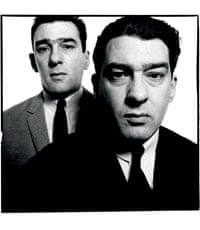 |
| The Kray Twins |
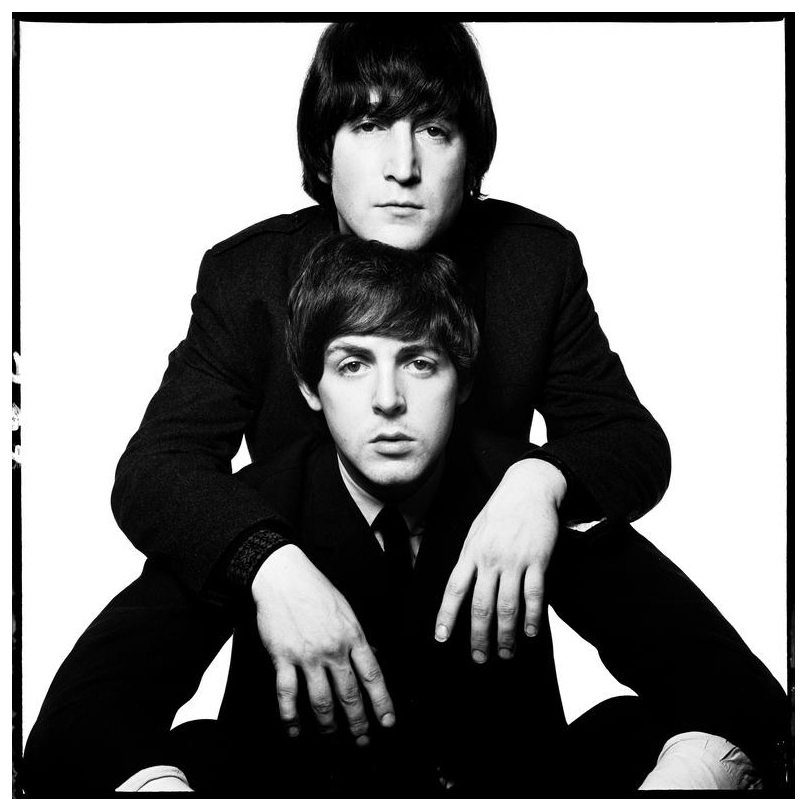 |
| The Beatles |
British New Wave
Useful Information:
british cinema book
intro to film studies (french wave)
best of british
films and national identity (swinging 60's)
Susan Sontag 'on photography'
Realism:
Is realism 'real' or is it all a set up made to appear 'realistic', I feel that it is only 'realistic' as many times in films and art it is a glamorized version of real life, it does not show the brutality or horrors that are in life but shows the positives which people want to be reminded of, 'real life' does not choose to be glamorized and does not hide its negative features.
Challenges to realism:
Americanisation - Hollywood and the creation of the 'Star System' where actors were idolized and became celebrities, they were used to draw the audience in and allow the audience to connect more with the scenes within the movies.
Commercialisation - Which led to the decline of traditional values.
Anxieties - The current youth was all 'post war babies' which meant they were worried about another war happening yet they were celebrating the end of the war and freedom of life.
cold war / Hbomb / spies / communists are a few things that the people were afraid of
The youth would grow into the peace movement in 60's because they were reacting to the horrific events they had lived through and did not want to witness again.
Social problem films
(kitchen sink dramas)
Having lived through the war the youth were not watching escapism films, but were interested in the realism films that showed how life could be for them, even if it was a glamorized version of life.
'Look back in anger'
filmed in natural recognisable locations that the audience could easily associate with.
The audience were able to identify with characters as unknown people were cast as actors, this meant that without the celebrity status the audience connected to the characters.
New wave:
almost punk like, rebelling, stereotypical 'angry young man'
1950's
birth of the generation gap, before this children stayed children until they were expected to grow up and become adults, there was no middle ground where the children explored different avenues
youth culture - music / fashion, these became more readily available and luxurious after the war, there was a target audience for teenagers as they changed their style into their own
teenagers were 18/19/early 20's years old instead of the younger teens that are becoming teenager in this society
TV - teens went to cinemas instead of sitting with the family to watch TV
New Wavers
underage sex - pill has just come out
adultery - mixed race r'ships, homosexuality
change from lower to higher classes (look back in anger)
John hill 'sex class and realism'
book
Documentary Movement
- grainy
- handheld
- Black and White
John Grierson
documentary is creative / poetic / beautiful / real
woodfall studio - new wave studio
Alan Lovell
criticised movement:
" how can you be creative if you have to be real? "
" does having an education affect your ability to be a director? "
French New Wave
revolution of cinema / anti hollywood
Italian New Wave
neo realist
Monday 29 September 2014
City of the 21st Century
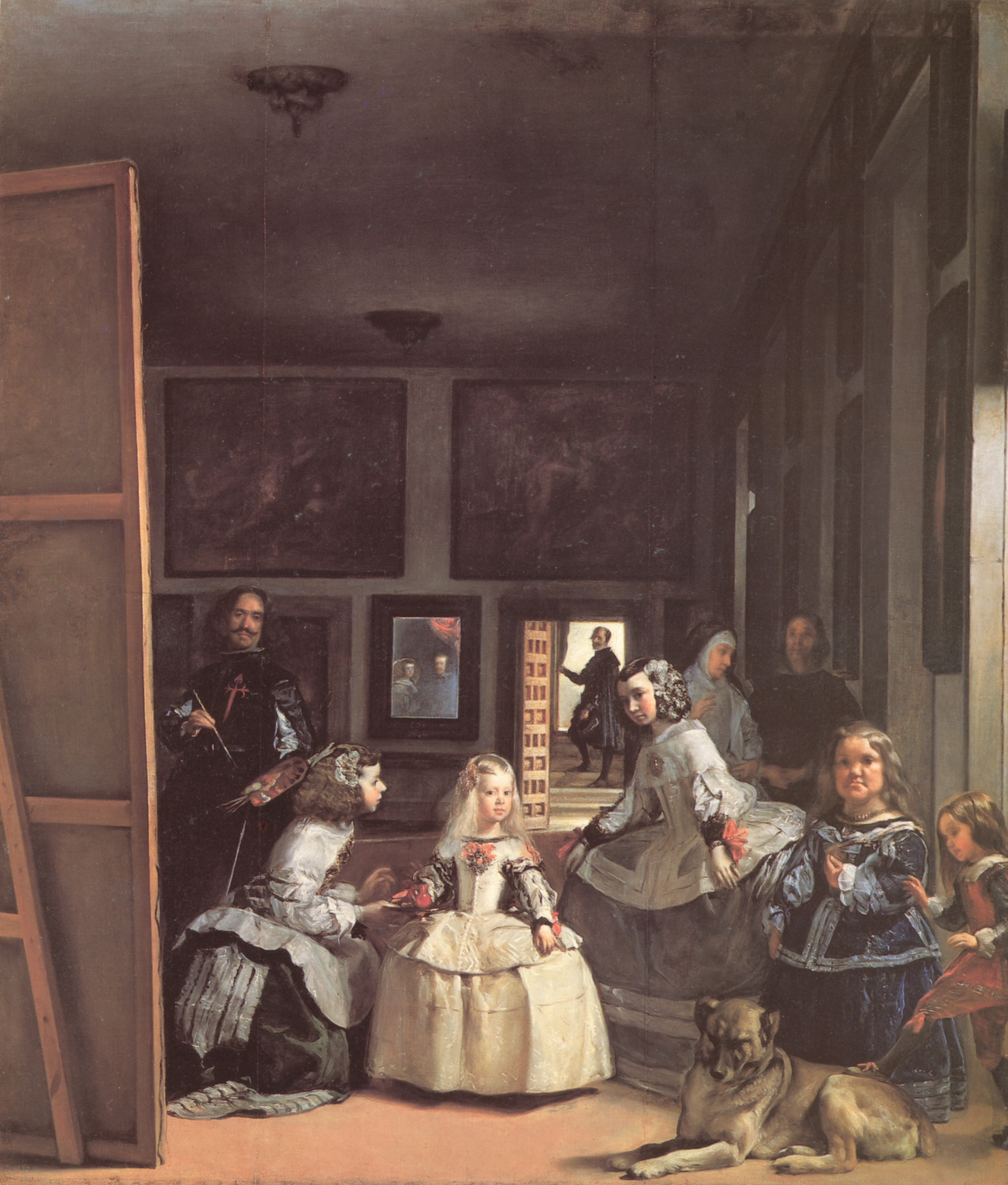 |
| Diego Velazquez - Las Meninas |
In this painting the artist has chosen to include himself in the painting as it is a viewpoint from the clients eyes, it is a staged scene that shows a wealthy family's children playing while the maids watch over them, we have been given the viewpoint of the monarch who this painting was commissioned by, we can only see them in the mirror in the background, this was a new viewpoint in photography that was not common before as artists would be showing the subjects straight on so that they could see their wealth and status portrayed.
 |
| Manet - A Bar at the Folies-Bergère |
This painting was new in style as it had not been commissioned for a wealthy client to show their wealth, but it shows daily life of a woman working behind the bar. In this painting the background is a mirror reflection of the bar behind the woman so that more of the bar can be seen, the painter has chosen to angle the reflection so that we would not be seeing himself however can see the customers in the bar.
Jeff Wall
- exhibits in light boxes
- large format camera
- hybrid of staged and straight (intended to look straight)
- influenced by art and films
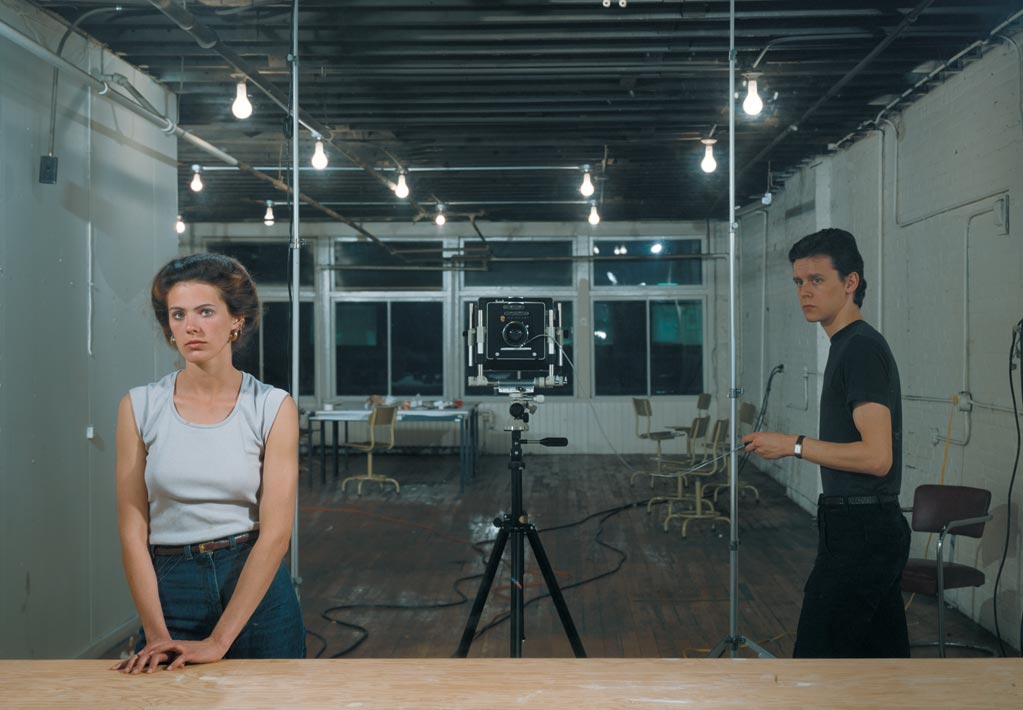
Picture for Women
This is a picture that Jeff Wall took showing himself and the model in the mirror, including himself mean that there is added context within the photograph because we can see the setup and the studio surrounding, it is an inner glimpse at how the photographer works.
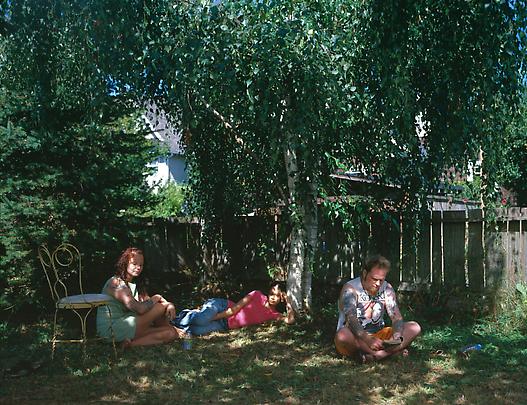

Tattoos and shadows
This photograph shows people in the garden and is heavily influenced by Monet "women in garden" (shown beside), many people spend summers in their gardens and as such it is not seen as a wonderful thing but this shows the contrast between the pattern in the tattoo's and the one caused by the shadow. The inspiration for this clip was a real life scene which Jeff Wall had seen and wanted to recreate.
http://www.sfmoma.org/explore/multimedia/audio/30
http://www.sfmoma.org/explore/multimedia/audio/30

Eviction Struggle
In this photograph we can see a family that are being evicted, one member of the family has to be escorted away from the house with another member behind trying to protest this. The story is a modern life event which many people can relate too. I think that Jeff Wall is trying to make a point about the unfairness of the situation as the camera angle makes the viewers look down upon the situation, the distance from the scene also connotes that the viewer would not step into help but watch from a safe vantage point.


The storyteller
constructed / comment on technology integrating with society and old traditions struggling to remain
This photograph is making a point about the way that technology is advancing and becoming integrated with society and that the old traditions of storytelling are struggling to remain and have been demoted and are getting overlooked.


This is a panorama of the city showing the differences between the old abandoned prison and the possibility of the new coming into fruition (seen by the JCB behind the lamppost).


Outburst
This picture is making a comment about the state of life that some people live in, working in a sweat shop they have long hours with very little pay in return and their boss still shouts at them for any and all mistakes. The boss is shown in a very threatening aggressive manner towering over the employee.




A sudden gust of wind
This photo-montage took over a year to complete to make a seamless effect, it is directly influenced by the Japanese woodblock printer Hokusai. The effect of this shows us it people that are changing and not nature as the wind is still affecting the people inside the frame.
Tom Hunter
- tutored by paul kennard
- Thoughts of Love and death (project)
- inf by preRaphaelites

Millais - the vale of rest
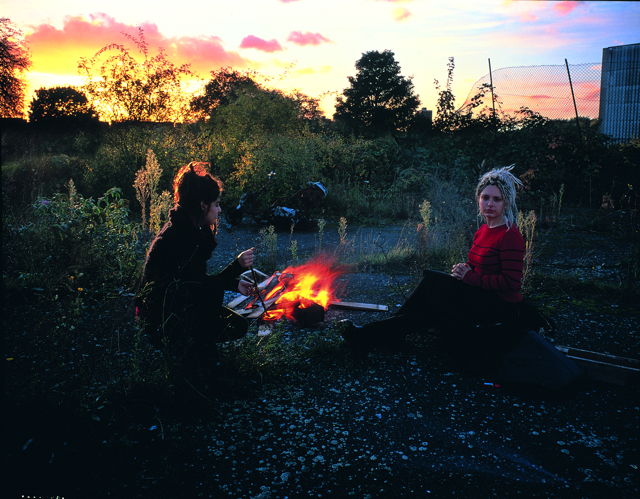
The Vale of Rest
This image is showing the outcast community and is a modern retake on the historical painting 'The Vale of Rest' by Millais.
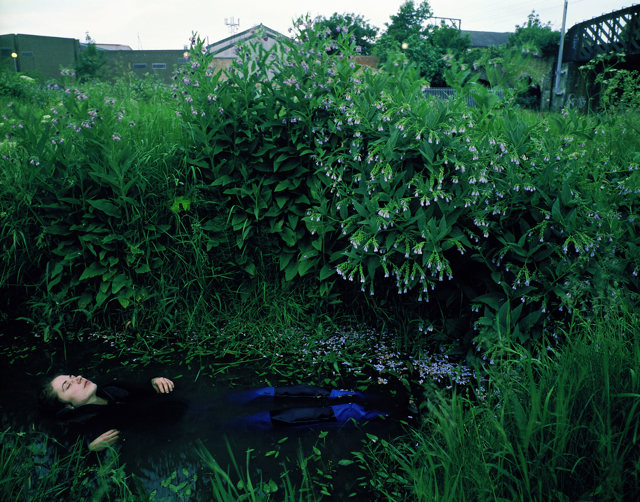
This image is showing the outcast community and is a modern retake on the historical painting 'The Vale of Rest' by Millais.

The Way Home
inf by Ophelia
Influenced by the painting 'Ophelia' this story is a representation of a young woman that Tom Hunter heard had died in a canal, This modern version of 'Ophelia' is a staged version of reality.
What's the difference between straight and staged?
'Straight documentary' are photographs that have been taken where the photographer has not interfered with the subject in any way and it is exactly how it happened while the photographer was there. This means that the photographer has to visualise the exact scene in the few milliseconds before taking the photograph.
'Staged documentary' means that the photograph is a set up scene that the photographer has carefully chosen to show in the way they have, this means that they can omit certain elements or bring the focus to one point which they want to highlight more easily. It is certainly more easy to be able to set up the scene because with more time the scene can be rearranged and explored.
Staged photographs are often set to appear Straight and at first look they do not appear Staged, in Tom Hunters and Jeff Walls work their photographs are Staged to be Straight.
'Straight documentary' are photographs that have been taken where the photographer has not interfered with the subject in any way and it is exactly how it happened while the photographer was there. This means that the photographer has to visualise the exact scene in the few milliseconds before taking the photograph.
'Staged documentary' means that the photograph is a set up scene that the photographer has carefully chosen to show in the way they have, this means that they can omit certain elements or bring the focus to one point which they want to highlight more easily. It is certainly more easy to be able to set up the scene because with more time the scene can be rearranged and explored.
Staged photographs are often set to appear Straight and at first look they do not appear Staged, in Tom Hunters and Jeff Walls work their photographs are Staged to be Straight.
Subscribe to:
Posts (Atom)
